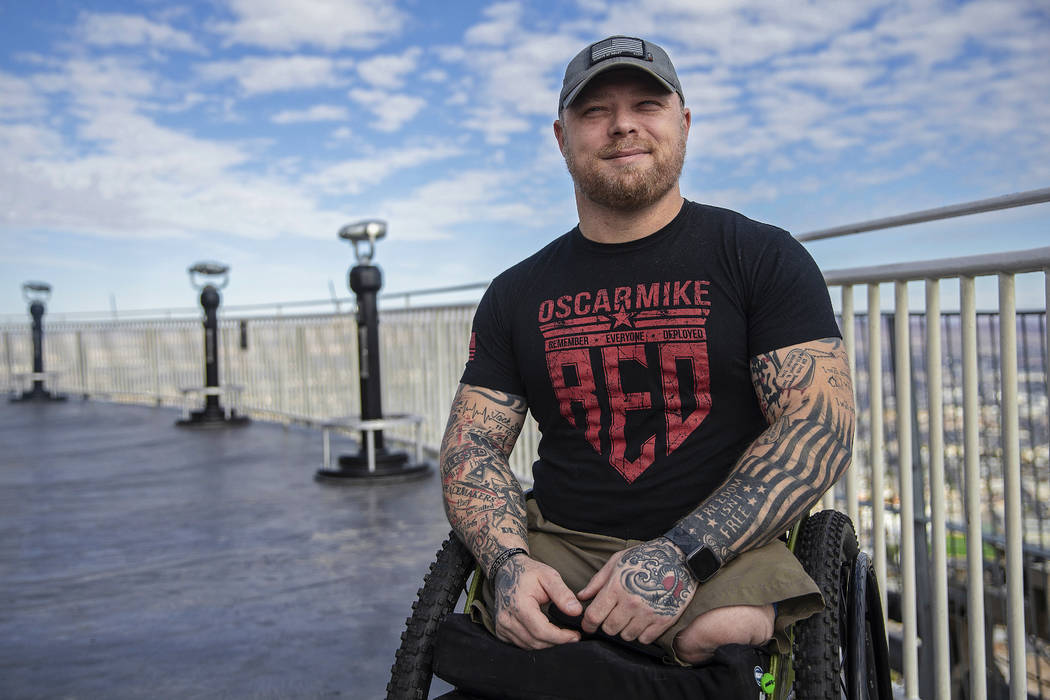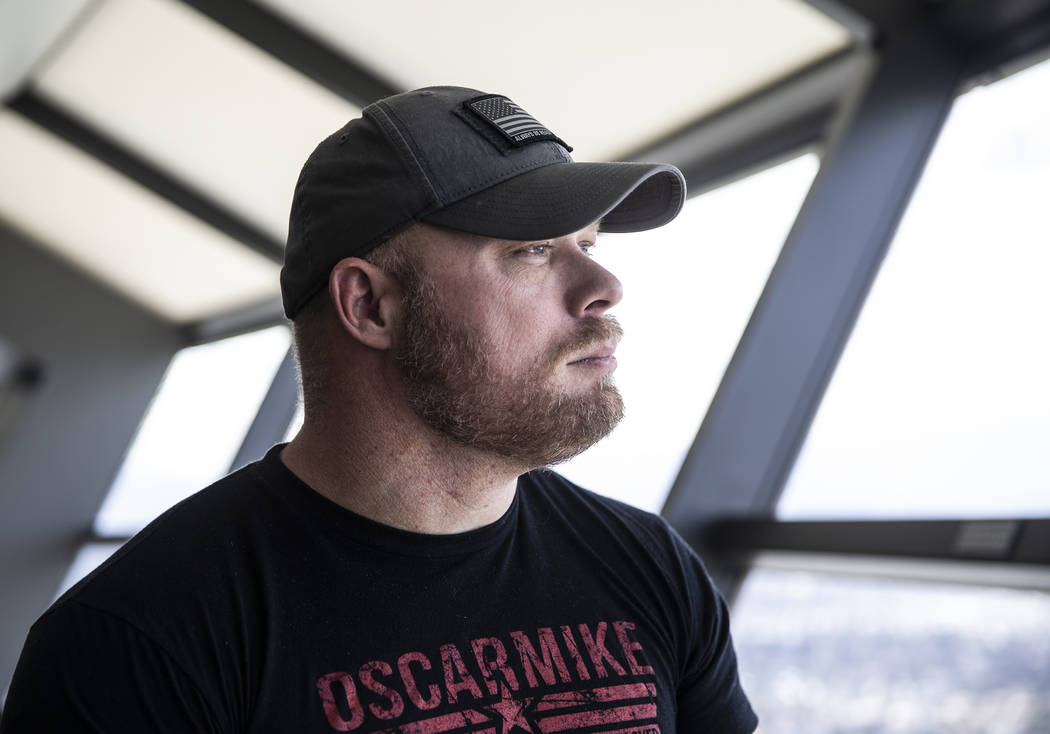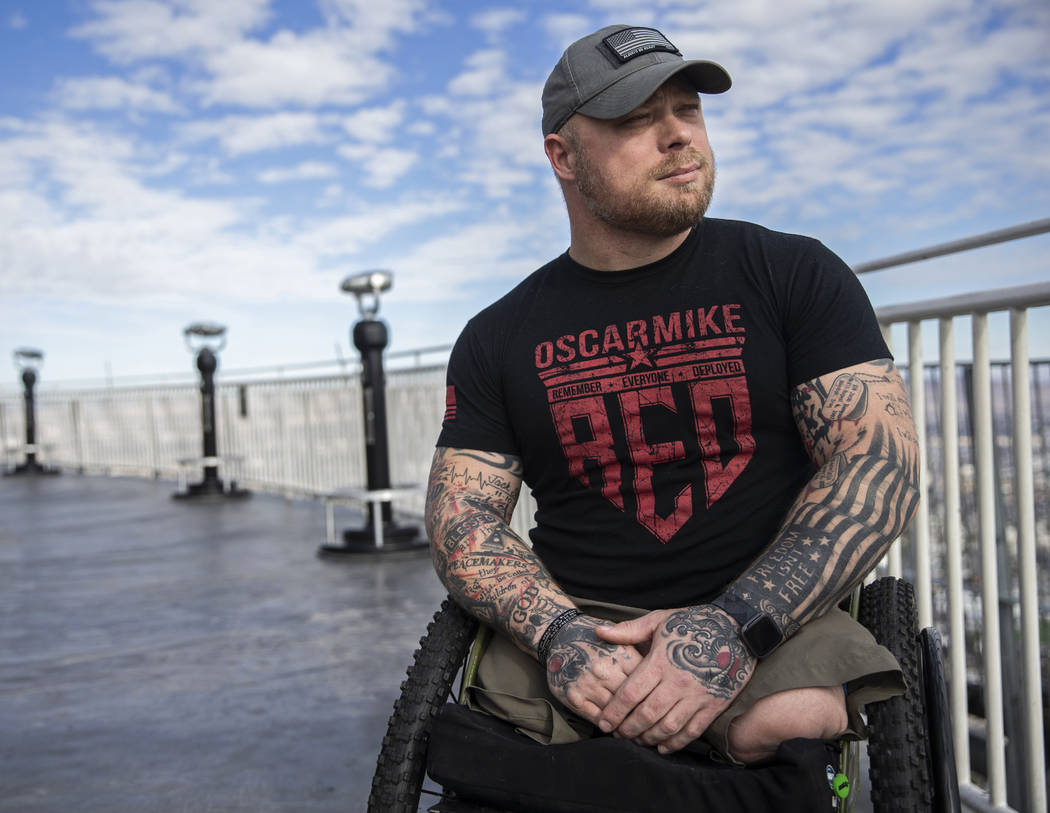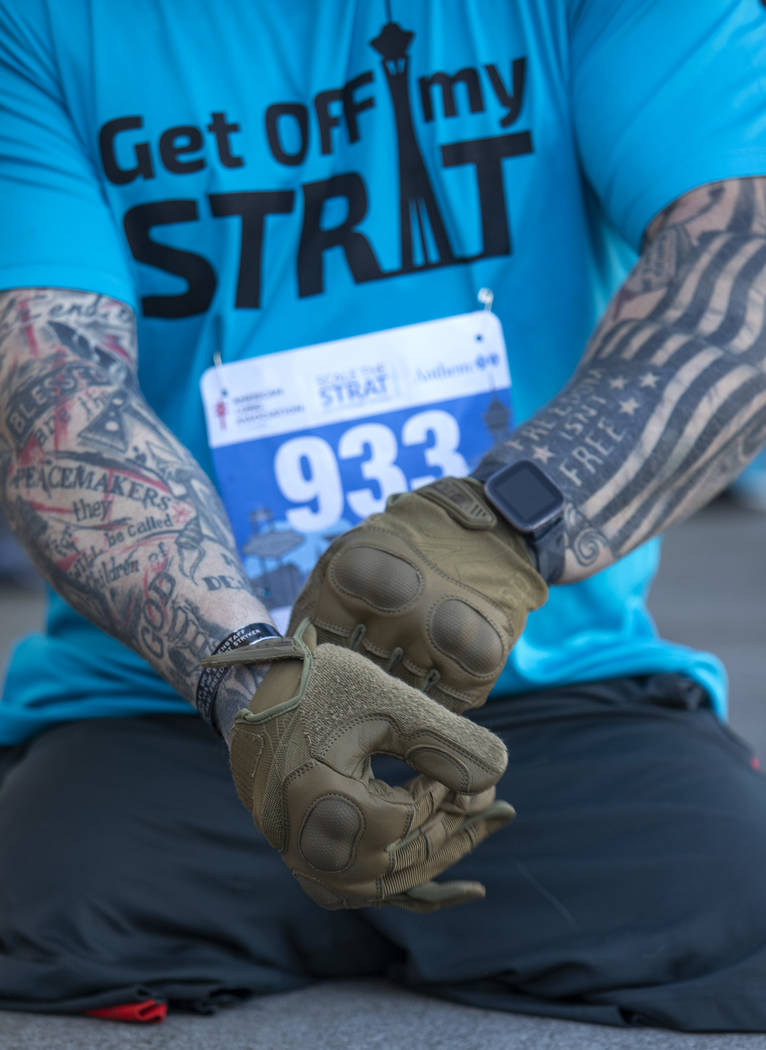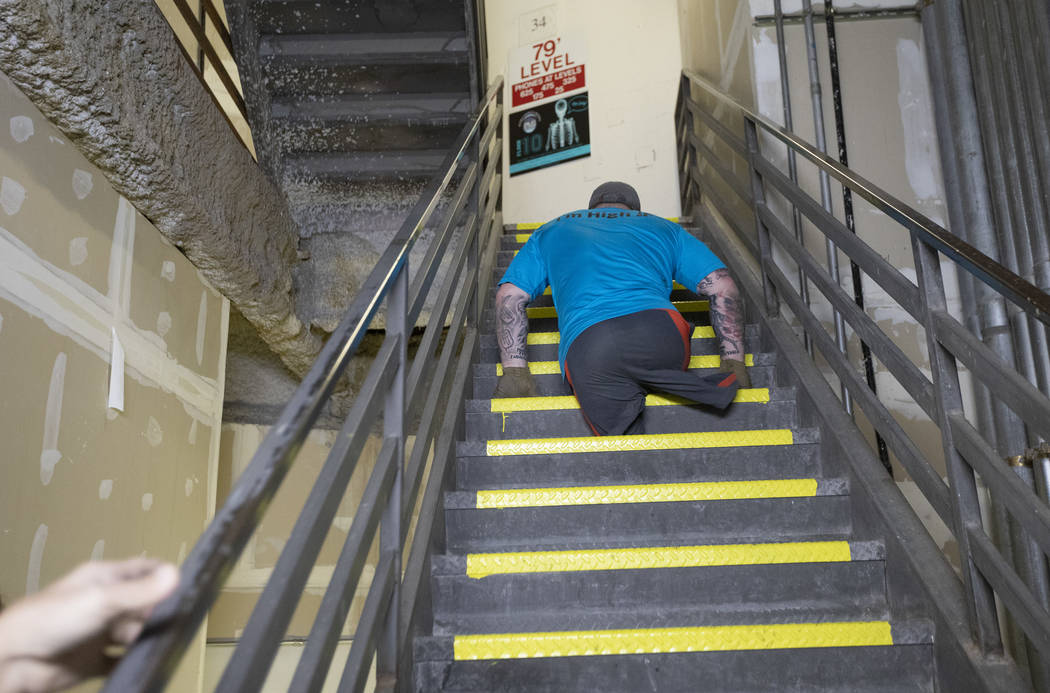Army veteran without legs ascends The Strat in Las Vegas
For Travis Strong, there was only one way to scale the 1,455 steps of The Strat: with his arms.
The same arms that bear the names of his fallen Army comrades. The same arms that he’s relied on since he lost his legs in 2006. The same arms that were on fire when he got the top of The Strat on Sunday.
“My shoulders are smoked,” the 42-year-old from Colorado Springs, Colorado, said as he climbed to the 108th floor of The Strat during the Scale The Strat benefit. “It’s a good sore. You just have to push yourself to get it done.”
Strong joined more than 1,000 people who raced up the steps and raised nearly $300,000 for the American Lung Association in Nevada.
Strong’s veterans group of 20, each bearing blue shirts that read “Get Off My STRAT,” raised $4,335 for the mission to fight lung disease.
Over the years, Strong has made it his mission to push his limits. He’s done Spartan Races Tough Mudders, and a four-day hike up Pikes Peak, a 14,115-foot mountain near Colorado Springs.
“I’ve always liked to do dangerous stuff,” he said. “The more extreme, the more harder it is, the better. Pushing myself gets me out of any type of mental funk that I’m in, helps me get through stuff.”
Strong said scaling The Strat is different from some of his other missions, which are usually to inspire veterans and counter veteran suicide.
“I love to help inspire people who feel like they can’t do anything anymore, people who are in my similar situation, who feel like life’s over, that they just can’t do it,” he said. “This is actually to benefit the American Lung Association and everything else. I’m doing what I could do, and I’m also helping.”
‘No fight like it’
Shannon Proctor, executive director of the American Lung Association in Nevada, said that even though Strong’s mission is different from her nonprofit’s, they each represent the same message.
“A fight is a fight, and I love that he sees that, and he’s a true patriot and soldier,” she said. “It’s about never giving up. It’s about fighting, and if you’ve ever seen somebody fighting to breathe, there’s no fight like it in the world.”
The average climber’s time was about 30 minutes, while Alexis Trujillo, 28, of Mexico City, set a new course record of 6 minutes, 46 seconds.
Strong, a light-bearded veteran, did his climb in 1 hour, 6 minutes.
Before scaling the steps, he put a gray American flag hat over his shaved head and slipped on a pair of utility gloves. He climbed off his wheelchair and stretched his burly arms on the cement. He rolled his shoulders.
Survivor’s “Eye Of The Tiger” played on a stereo.
“The beast is coming,” Strong’s younger brother, Anthony Durkacs, who lives in Las Vegas, shouted at his brother. “King Kong is going to scale that Strat right now.”
“Yeah, Travis!” Strong’s mom, Tayler Heston, of Bullhead City, Arizona, chimed in. “What a testimony. It shows nothing gets him down. The Lord has had his hand on him since the beginning.”
When it was time to scale The Strat, Strong led the group through the casino as Las Vegas resident and retired Air Force Tech. Sgt. Ronnie Bondol carried an American flag. In the staircase, he hoisted himself up using his fists and palms. He maneuvered each of his thighs up one stair at at time.
When he stopped before level 52, his teammates chanted for him. He took off his hat and whistled.
“You got it, you got it,” Bondol said as the rest of the team chanted, “Travis, Travis, Travis!”
Strong took a deep breath and persevered, staying true to the mantra of the Army warrior ethos tattooed on the back of his left arm, reading “I will always place the mission first. I will never accept defeat. I will never quit, and I will never leave a fallen comrade.”
‘Life’s not over’
Strong always wanted to be a soldier. As a kid, nearly every Halloween he dressed up in his stepfather’s old Army uniform from his days in the Vietnam War. Strong enlisted in 1997 at 19.
He served two stints in the Army during an 11-year military career. He rejoined in 2003 after the Sept. 11, 2001, terrorist attacks and was deployed twice, the second being to Baghdad, in late 2005.
He was a staff sergeant on Nov. 27, 2006, when his team’s eight-wheeled armored Stryker was struck on a Baghdad street by a roadside bomb.
The explosion took his right leg. His left leg was badly mutilated and later amputated. Strong remembers the smell of the dirt, the smoke and the fire. He didn’t feel any pain or see any blood. But he knew there was something wrong.
“I felt my body just draining,” he said. “That was the most intense feeling I’ve ever felt. It was a sense of dread. It was a sense of you’re dying, and there’s nothing you can do to stop it.”
One of Strong’s comrades pulled him out of the top hatch, put tourniquets on his legs and got him to the hospital. After arriving, he flatlined four times.
His experience has helped him provide insight to soldiers struggling with depression or post-traumatic stress disorder.
“My goal is to help show people that life’s not over just because something traumatic happens,” he said. “If I can help just one person, that’s a win for me.”
Contact Briana Erickson at berickson@reviewjournal.com or 702-387-5244. Follow @ByBrianaE on Twitter.








